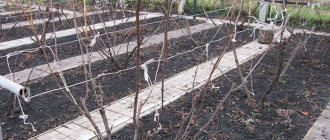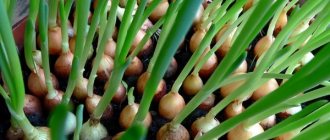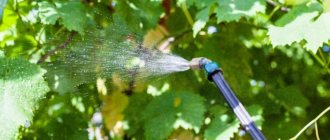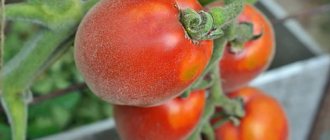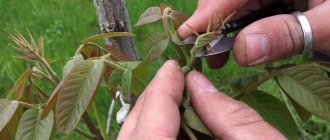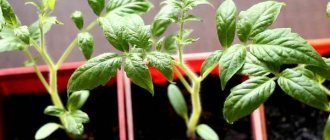Rules for caring for potatoes
Planting is not the most labor-intensive procedure in the potato growing scheme.
Physical effort will be needed during:
- weeding;
- hilling;
- loosening;
- cleaning.
High-quality and sharp tools make routine physical work much easier. There are many devices for caring for potatoes. There are manual devices and mechanized equipment. For a good harvest, balanced fertilizers and timely watering are needed. Fertilizing and irrigation should be carried out based on the recommendations that the manufacturer gives in the description of the variety.
Planting schemes and technology
Different schemes are used for cultivating crops. In all cases, immediately after planting, the beds are watered with water at room temperature. At night for the first 2 weeks, the area is covered with film. To plant and care for potatoes in open ground over a large area, a “Cascade” walk-behind tractor and other equipment are used.
The list shows the most popular technologies for growing potatoes.
Classic technology
Make beds 20 cm high and 160 cm wide. 30–50 cm are left between them. 2 rows of potatoes are planted on each hill, maintaining a distance of at least 80 cm between them.
Dutch scheme
If groundwater is close to the soil surface, potatoes are planted in ridges. The rows are placed at a distance of 75 cm from each other, a gap of 50 cm is made between the holes. Humus and ash are poured into each recess, after which a tuber is laid.
The potatoes are sprinkled with earth on both sides, forming a ridge. As it grows, add soil and remove weeds. As a result, the elevations reach 30 cm. This scheme is called Dutch.
Lots of productive potato planting, Dutch method
Under the shovel
Planting under a shovel is the most popular and ancient method. For each tuber, dig a 6-10 cm hole. Throw potatoes into the hole, 1 tbsp. l. ash or long-acting granular fertilizers are covered with earth.
The disadvantage of this method is that the vegetable is sensitive to high humidity when planted shallowly.
Under the straw
Caring for potatoes makes it easier to grow them under straw. To do this, the tubers are laid out in one row on a moistened dug-up bed, at a distance of 25–30 cm from each other. The planting material is sprinkled on top with a thin layer of soil and a 20 cm layer of straw. In this case, it is not necessary to mulch and loosen the beds.
The only negative is that straw attracts slugs and rodents.
Under mulch
When cultivating under mulch, sawdust, humus or peat are used. Planting scheme, like under straw.
In bags, boxes or barrels
Growing potatoes in bags, boxes or barrels is easy. To do this, fill a 20 cm container with a mixture of garden soil and compost. Then 3-4 sprouted tubers are laid, which are covered with earth.
When the height of the bush reaches 15 cm, add 6-7 cm of soil. This is done several times. This method allows you to get a rich harvest without weeding, mulching and hilling. It reduces the risk of plant rot and late blight.
Chinese scheme
The Chinese method excludes hilling and mulching. To do this, dig holes 50 cm deep and 70 cm wide in a checkerboard pattern. 6 cm of fertile soil are poured onto the bottom and potatoes are laid. 6 cm of soil is sprinkled on top of the tubers.
When the plant reaches a height of 15 cm, such an amount of soil is poured into the hole so that the stem is half covered. This is done until the holes are filled and slides 10 cm high are formed above the surface of the site. Preparing planting holes is a rather complex process that gives the highest yields.
Chinese method of growing potatoes - 24 kg per tuber
Deep landing
When planting deep, holes are dug 15–20 cm below the soil level, sprouted and processed potatoes are laid out sprouts down, and 2–3 cm of damp soil is sprinkled on top. This option is suitable for dry regions.
Mitlider method
The beds are made in the direction from north to south, 50 cm wide. A distance of 1 m is left between them. Potatoes are buried 10 cm in 2 rows. A trench 5 cm deep is made between the rows, water and fertilizers with magnesium, molybdenum, potassium, nitrogen, phosphorus and boron are poured into it. This is a costly method, but it increases productivity by an order of magnitude.
Planting potatoes using the Metlider method
In the trench
Planting in trenches will allow you to get a rich harvest and do without fertilizing. In the fall, trenches are dug 30 cm deep at a distance of 70 cm from each other. They are filled to a height of 15 cm with straw, plant debris, and 25 g of urea per 1 m2. Additionally, add 1 tbsp per 1 m2. ash. In spring, tubers are placed in the depressions and covered with soil.
Loosening
Tubers develop only in loose soil. The first loosening procedure is carried out after the first shoots appear and is repeated until the tops close. The soil is loosened both between the rows and around the bushes.
Loosening depth is 3 cm, frequency depends on the soil structure. For loose, light soils, several treatments per season are sufficient. Clay and loamy soils need to be loosened after each rain (watering).
General requirements for growing conditions
Careful and timely care of plantings largely determines the final potato yield. You can apply a sufficient amount of fertilizer, plant in a timely manner and with high quality, but still the yield will be low if the crops are overgrown with weeds. Caring for potatoes comes down to removing weeds, loosening the soil, hilling, watering, fertilizing, and combating diseases and pests. Potato crops must be free of weeds at all times, and the soil must be loose, allowing air to freely pass to the roots of the plants.
After planting, the soil surface usually becomes compacted, which delays the emergence of seedlings. Therefore, some time after planting, on the 6-8th day, the soil needs to be loosened with a rake. When a thick crust forms on heavy soils, it must be broken with frequent blows of a rake, without moving the soil particles from their place, so as not to break off the sprouts. Timely and well-carried out loosening facilitates weed control and opens up oxygen access to germinating tubers. Harrowing should be started not when the weeds sprout, but when they are in the white thread phase. At this time, the seedlings die easily. Harrowing should be done along the rows - twice before emergence and twice after emergence. Treatments are repeated after 5-7 days.
As soon as full potato shoots appear, you should loosen the soil with hoes in the rows and around each bush, simultaneously removing the emerging weeds. When loosening, you should not cover the plants with soil, and accidentally covered stems or leaves should be straightened out by hand. Such loosening must also be carried out after each rain.
To create the best conditions for the formation and growth of tubers, potatoes are hilled. The first hilling is carried out when the stem reaches a height of 14-16 cm. Hill up the potatoes with hoes, and it is most convenient to use solid hoes so that the soil does not spill through the holes between the metal part and the handle. The soil is rolled onto the tops in such a way that a small mound is formed around each bush, covering the lower part of the tops. The middle of the bush is also covered with earth to prevent the stems from getting too close.
The second hilling is carried out 15-20 days after the first, before flowering. This time, first of all, they loosen the soil between the rows with a hoe and destroy the crust on the surface of the ridges, and then roll the soil onto the bush. During the second hilling, the ridges are made higher, which promotes additional formation of tubers and protects against surface waterlogging of the soil.
It is recommended to hill up potatoes after rain. Then the lower part of the stems is covered with moist soil, as a result of which additional stolons with tubers are formed and the yield increases. In dry and hot weather, hilling is carried out in the morning and evening, so as not to cause the plants to wither during the day. To achieve a high yield and good quality potatoes, you need to keep the soil moist during the summer. With prolonged drought and heat, the growth of tops and tubers stops. The subsequent rains usually cause the tubers to become ugly and deformed. Therefore, during the dry season, when the leaves of the plants wilt in the middle of the day, and the soil at a depth of 5-6 cm is dry, potatoes need to be watered. Watering is especially necessary before flowering and during flowering. It is best to water potatoes in the evening, after the heat of the day has subsided. Each bush consumes at least 2-3 liters of water. The next day after watering, just like after rain, you should loosen the soil with hoes. Watering can be combined with fertilizing potatoes.
A major role in the struggle for a high potato yield is played by the complete satisfaction of this plant with all the necessary nutrients. Sometimes, by the appearance of plants, you can determine what element they need. Thus, with a lack of nitrogen, the stems and leaves grow poorly, and the color of the leaves gradually turns from green to yellow. During phosphorus starvation, the bushes shrink and the leaves move away from the stems at an acute angle. With a lack of potassium, bronze spots appear between the veins of the leaves, the leaves become wrinkled, their edges bend down and die prematurely.
For feeding, you can use slurry diluted 2-3 times with water, bird droppings diluted 10 times, fresh cow manure (mullein) diluted 4-5 times with water, and mineral fertilizers. The fertilizer solution is poured into shallow grooves made around the bushes, or into holes that are filled with a hoe between the plants. It is necessary to ensure that the solution does not get on the plants, as this can cause burns. After the solution has been absorbed, the holes and grooves are sealed with dry soil.
When fertilizing with mineral fertilizers, add 2 tbsp per bucket of water (10-12 l) for the first time. l. nitrogen and potassium fertilizers and 4 tbsp. l. phosphorus, in the second - 4 tbsp. l. nitrogen and phosphate fertilizers and about 1 tbsp. l. - potassium. 1.5-2 liters of solution is poured under each bush. When using bird droppings for one feeding per 100 sq. m requires 6-7 kg of dry manure.
Liquid fertilizers give very good results. But if it rains and the soil is moist enough, you can also use dry fertilizing. In this case, fertilizers are scattered around each bush at a distance of 5-6 cm from the stem and sealed during loosening and hilling. This way you can apply mineral fertilizers, bird droppings and ash. When dry fertilizing, slightly less fertilizer is applied than when planting. The first feeding should be carried out before the first loosening, and the second - two weeks after the first, before hilling. Later fertilizing, especially with nitrogen fertilizers, can enhance the growth of tops to the detriment of tuber accumulation and cause the formation of ugly tubers.
Gardeners often complain that potato tops are large, but there are no tubers. This is the result of excess nitrogen in the soil - plants “fatten”. In this case, you should feed the potatoes with phosphorus and potassium fertilizers. Per 100 sq. m add 3 kg of superphosphate and 1 kg of potassium chloride. Potash fertilizers can be replaced with ash (half a glass for each bush). Such feeding will not only speed up the formation of tubers, but will also significantly improve their taste. Foliar feeding of plants (feed feeding) with a solution of ammonium nitrate (1.5%) with the addition of 0.75 g of boron for each liter of solution has a positive effect on tuberization. The technique of preparing a solution and applying fertilizing through a leaf is simple and quite accessible to every gardener. 1.5 kg of ammonium nitrate is dissolved in 100 liters of water and 130 g of boric acid is added. After thorough mixing, use a hand sprayer or a watering can with a fine strainer to spray the potato bushes, using about 100 ml of solution for each plant. Thus, 100 liters of solution can treat 1000 potato bushes. The plants should be sprayed with a solution of ammonium nitrate and boron in early July, and a month before harvesting the potatoes, carry out a second foliar feeding - superphosphate, potassium chloride and boron are used for it. Prepare the solution a day before use as follows: place superphosphate in a wooden barrel and pour water (take 10 kg of superphosphate per 100 liters of water). During the day, the contents of the barrel are stirred several times (up to ten). 3-4 hours before use, the infusion is filtered through a fine sieve or cheesecloth into another barrel, into which potassium chloride (1 kg) and boric acid (100 g) are added previously dissolved in water. Up to 200 g of solution is used per bush.
When planting with dried and germinated tubers, seedlings appear in 10-15 days, when unprepared - in 18-25 days. During this time, the surface of the soil is covered with weeds, and after rains a crust forms on it, preventing its aeration. Therefore, it is important to loosen the plantings and destroy weeds carefully so that the ridges and ridges are not destroyed. If the spring is long and the emergence of seedlings is delayed, watering is carried out two or three times. This accelerates the growth of shoots. If night frosts are expected, the seedlings are spudded.
Read also: Selection and preparation of seed material for storage
Hilling, like loosening, contributes not only to the activation of tuber growth, but also to good ripening. The first time hilling is carried out when the sprouts reach a height of 10-12 cm. At this age, the middle of the row spacing is not yet occupied by plant roots, therefore, simultaneously with hilling, it is effective to loosen to a depth of 15-16 cm. The layer of rolled soil on the ridges is increased by 5-6 cm , leaving the tops of plants 4-5 cm high above the surface. During the summer, potato plantings are weeded as necessary, loosened 4-5 times and hilled 2-3 times. The second hilling is done when the plant height is 15-20 cm. The treatment of row spacing is completed by the time the plants close. Fertilizers are applied before hilling, preventing fertilizers from getting on the leaves. If they do get in, they are washed off by watering the plants.
When growing early potatoes, avoid using fertilizing with increased doses of nitrogen, especially slurry. On poor and averagely fertile lands, 2-3 fertilizing with mineral fertilizers or manure is given over the summer. Initially, nitrogen and potassium are added, and in mid-summer - only potassium. For the first feeding, 20-30 g of fertilizer per bucket of water is enough, watering the soil on both sides of the row at a distance of 10-15 cm from the plants. Subsequently, 40-50 g of fertilizers are applied, increasing the distance to 20-25 cm. The first time feeding is given after germination, the second - after 15-20 days. In dry weather, after fertilizing, plants are watered to reduce the concentration of fertilizers and allow them to penetrate to the roots of the plants. You can also use dry fertilizers, sprinkling the plantings along the rows or in the middle of the rows, followed by watering.
Irrigation is very effective during dry periods, especially when growing early potato varieties. Watering accelerates the growth and development of plants, increases yield and increases the size of tubers. Most often you have to water sandy and sandy loam soils that poorly retain moisture. Potato plantations require constant, uniform soil moisture, especially during dry periods, when the weather is most often characterized by intense light and plenty of heat. Late potato varieties are fed twice with mullein diluted with water at a rate of 1:8, or with bird droppings diluted 1:10. Under each plant you need to pour 2 liters of solution.
Hilling up potatoes
This is one of the main points in caring for potatoes. Without hilling, there will be no full formation of tubers. By raking the soil towards the potato stems, they improve oxygen access to the roots and create conditions for the formation of tubers from stolons. There are several methods of hilling.
Classic hilling
In classic hilling, soil is raked onto potato rows from both sides. The tops of each bush are sprinkled with earth. A groove (furrow) is formed between the rows, into which water is then released for irrigation.
Fan hilling
With the help of fan hilling, the yield of potatoes is increased. The earth is raked into the center of the bush, spreading the tops apart and improving its illumination. Some gardeners prefer not to cover the bushes with soil, but rather place dry grass or straw in the center. It has been proven that this method of hilling increases productivity by 2 times.
See also
How to use organic fertilizers from fish and bone meal in the gardenRead
High hilling of potatoes
It makes sense to use this type of hilling when growing late varieties of potatoes. Thanks to the high ridges, the number of tubers in the nest and their size increase. For early and ultra-early varieties this method is unacceptable; they need to be hilled low.
Types and varieties of potatoes
All varieties of potatoes according to economic purposes are divided into:
- technical - they contain more than 16 percent starch;
- universal - potatoes contain from 16 to 18 percent starch;
- fodder - root crops are relatively large in size and contain a large amount of protein;
- Tables - contain a large amount of protein and vitamin C, and starch at least 18 percent.
And all table varieties are divided into 4 types:
- type A - the pulp of the tubers is dense and not mushy;
- type B - mealy dense pulp is boiled only a little;
- type C - potatoes of medium mealiness, the flesh is soft and boils heavily;
- type D - potatoes are completely boiled.
Type A is suitable for preparing a variety of salads, type B and C are suitable for mashed potatoes, French fries and chips, and type D is only for preparing mashed potatoes. In different varieties, root vegetables can be colored in different colors: red, pink, purple, white or yellow.
Potato varieties are also divided into 6 groups according to ripening time:
Extra early varieties
Harvesting takes place 34–40 days after planting. Varieties:
- Ariel - this table variety is distinguished by its high yield, the tubers are light yellow, the flesh is creamy and has a pleasant taste, the average weight of potatoes is about 170 grams, cooked potatoes are not subject to darkening;
- Riviera - the variety is characterized by high productivity; it can bear fruit twice during one season; large, brownish, smooth, oval-shaped potatoes have very tasty yellow flesh;
- Minevra - this variety is characterized by high yield, and is also resistant to cancer and scab, it is suitable for long-term storage, the roots are white, and the pulp is yellow and very tasty, it contains about 17.5 percent starch;
- Bellarosa - the variety is unpretentious, drought-resistant and high-yielding; light red potatoes have an oval shape and very tasty yellowish flesh.
Early ripening varieties
Harvesting takes place 50–65 days after planting. Popular varieties:
- Impala - the variety has a high yield, so one bush grows up to 13 smooth yellow root vegetables, oval in shape, they rapidly increase in mass, their flesh is yellowish and dense;
- Red Scarlett - this variety was bred by Dutch breeders, the bush is low and semi-spreading, large red root vegetables weigh about 140 grams and have yellowish flesh;
- Dniepryanka - this Ukrainian variety is distinguished by its productivity, it can produce 2 harvests in 1 season, it is suitable for long-term storage, the oval root vegetables are colored yellow, they have creamy flesh and a small number of eyes, after cooking the potatoes are not subject to blackening;
- Rosalind - the variety has a high yield, the flesh of the pale red root crops is yellow, and the eyes are shallow; on average, a potato weighs about 100 grams, and it contains 17 percent starch.
Mid-early varieties
Harvesting is carried out 65–80 days after planting. The following varieties are popular:
- Sineglazka - this variety is distinguished by its unpretentiousness and high yield; gray root vegetables have lilac eyes and tasty white pulp;
- Zabava is a Ukrainian variety characterized by productivity, has medium-sized pink root vegetables (average weight 120 grams), their white pulp has high taste and low starch content;
- Mriya - this variety is characterized by resistance to diseases (for example, cancer and rot) and high yield, potatoes taste similar to Sineglazka, pink root vegetables have yellowish and tasty pulp, which contains a large amount of starch;
- Nevsky - white tubers weigh on average about 130 grams, they have a blunt top and pale red eyes, the white flesh does not turn dark when cut, and contains only 11 percent starch.
Mid-season varieties
Harvesting is carried out 80–95 days after planting. Varieties:
- Picasso - this productive Dutch variety does not need frequent watering; one bush can grow up to 17 white root vegetables, they have red spots on their surface, and their flesh is creamy;
- Sante - a table variety is distinguished by its unpretentiousness and productivity, the yellow large and smooth tubers are oval in shape, and there are small eyes on the surface, the creamy, tasty pulp contains a small amount of starch;
- Peter's Riddle - this prolific variety is suitable for long-term storage; pink root vegetables have pinkish-cream, very tasty pulp.
Mid-late varieties for winter
Harvesting is carried out 95–110 days after planting. The best varieties:
- Desiree - this variety, suitable for long-term storage, is characterized by high yield and resistance to drought, red root vegetables have tasty yellow pulp, which contains 21.5 percent starch;
- Kuroda - a Dutch variety that is resistant to diseases, cooked potatoes do not darken, pale red root vegetables have an oval shape and yellow flesh, which contains a large amount of starch (about 21 percent);
- Zdabytak - this Belarusian variety is one of the best in this group; the yellow oblong root vegetables have yellow flesh, which contains about 25 percent starch; one plant can grow up to 22 potatoes.
Late ripening varieties
The harvest is harvested when 110 or more days have passed since planting. Varieties:
- Orbita - the variety is resistant to viral diseases and scab; yellow, round-shaped root vegetables have tasty white pulp, which contains 19 percent starch;
- Zarnitsa - the variety is resistant to late blight, scab and viral diseases, the pulp of the purple-red root vegetables is yellow with a low starch content;
- Cardial - a variety suitable for long-term storage, it is resistant to drought and diseases, as well as high yield, elongated root crops are red in color, the eyes are superficial, the pulp is very tasty yellowish in color.
Popular potato varieties. Description of varieties. Garden and vegetable garden issue 151
Potato fertilizers
When planting potatoes in a hole, you can add a special mineral fertilizer for potatoes; there are a lot of them on sale now.
Almost all fertilizers are produced in the form of granules, which contain the necessary set of nutrients.
The granules must be mixed with soil, after which the tuber must be placed in the hole with the sprouts facing up. If you have wood ash, you can pour either a handful or 1-2 tablespoons of it directly onto the potatoes.
When planting potatoes for many years in one field, the soil is depleted, so organic (humus, compost) and mineral fertilizers must be applied annually. In autumn, sow green manure. In autumn, sow green manure - vetch, rye.
In summer, do not forget about fertilizing. You can follow the standard scheme:
- Feed with ammonium nitrate when the tops grow to 10–15 cm;
- when the first inflorescences appear on the bushes, feed it a second time, use an infusion of ash (a glass in a bucket of water) and add potassium sulfate (1 tbsp.);
- When tubers are actively forming, water each bush with a solution of slurry with the addition of 1 tbsp. l. superphosphate.
When do potatoes sprout after planting?
Potatoes take a long time to sprout unevenly for various reasons:
- If there are sharp changes in temperature during the day compared to night, the vegetable tubers will lie in the ground without germinating. As soon as it gets warmer, green potato sprouts will begin to appear. The plant is able to withstand minor drops. But weather disasters in the form of severe frosts will destroy the seed material. Then, instead of sprouts, the potatoes sprout, forming miniature nodules.
- Soil moisture is important for crop growth. Excessively dry soil does not provide enough moisture and nutrition to the nodules. They dry up without ever emerging. There is a lot of moisture, its stagnation in the area will lead to rotting of the nodules.
- The depth at which the seeds are planted depends on the composition of the soil. Tubers are buried 8–10 centimeters in heavy clay soils, and 12–15 centimeters in light sandy loam soils. Then the potatoes germinate faster and on time.
- Potatoes grow poorly on poor lands. Therefore, when digging the site, humus, superphosphate and potassium salt are added. You can put fertilizers in each hole during planting.
- It is necessary to harrow the area for vegetable crops. The procedure is especially important for virgin lands. Unbroken lumps of soil will not allow potatoes to grow.
- One of the potato field pests, mole crickets, prevent seedlings from appearing. The gnawed tubers without eyes will lie in the ground and rot.
The quality of the seed material must be high, otherwise the sprouts will not sprout.
Speaking about the quality of planting material, pay attention to:
- absence of pest damage;
- vegetable variety;
- the presence of powerful sprouts on tubers.
If seed potatoes grown on the plot are sick, they cannot be planted. It will sprout slowly or rot in the ground. Tubers can be saved by treating them with potassium permanganate. A solution of boric acid and copper sulfate is used for disinfection. After processing, the seed material is dried.
Without germinating tubers, you cannot get a vegetable harvest. Before this, spoiled and diseased nodules are sorted. Ideal for planting would be healthy tubers weighing 50–70 grams. Larger ones are cut in half 2-3 weeks before planting. Sprouted potatoes are planted.
Bald spots in a potato field are due to the fact that some of the planted tubers did not germinate. This happens because:
- poorly selected planting material;
- Some tubers had no sprouts before planting;
- plant seeds are damaged by pests;
- potatoes lack nutrients;
- there are many large lumps of earth on the field.
To ensure uniform seedlings of the vegetable, you must carefully select the tubers for planting. They should be medium in size with thick, strong shoots. Long threads on the seeds indicate diseases of the crop and its inability to grow.
But greened tubers will be more useful on the site; they can produce a healthy harvest. They accumulate solanine, which will help the plant resist diseases and pests.
Before the vegetable shoots appear, the area is harrowed, loosening the soil to a depth of 4–5 centimeters. For the procedure, choose a sunny, dry day so that the emerging weeds die.
Harrowing is also necessary when the sprouts hatch, the second time when the stems reach ten centimeters in height. The rows are loosened perpendicularly to a depth of seven centimeters.
Protection from pests and diseases
The most dangerous potato pest is the Colorado potato beetle and its larvae. If the number of pests is moderate, they are collected by hand, and the bushes are treated with infusions of wormwood or celandine. In case of severe infection, insecticides are used to treat late and mid-late varieties. Early ripening varieties are not treated with chemicals.
Potato diseases (late blight, rot) are treated with biological products:
- Guapsin.
- Agat-25K.
- Immunocytophyte.
A description of potato care methods will help you grow a good potato harvest.
Harvesting without harming the next crop
- The tops are mowed when they are still green
Usually the plant tops are allowed to dry in the garden. This is very harmful for the tubers - leaves and bushes fall to the ground and transmit to it viruses and diseases that the bush has “picked up” throughout life. Therefore, when the lower 2-3 layers of leaves in potatoes have withered, it’s time to mow the tops. Next, wait 2-3 weeks for a strong skin to form and dig. This way you not only save the soil, but also disinfect it - the sun and temperature kill viruses and some potato diseases.
- Select seeds only from good bushes
For planting, people usually select potatoes “by size”. This is “inside-out selection.” For planting, it is necessary to take potatoes from strong and powerful bushes that have given a good harvest. These bushes can be spotted with a red rag or stick while the plant is still growing. When you dig and find a very beautiful bush, you put these potatoes aside for seeds, no matter how big they are. Then there is a guarantee that next year the harvest will be the same as from this bush. My parents selected potatoes for planting like this: In the hole where there were large, good potatoes, they set aside smaller ones for seeds. There is more fuss, but the harvest is more guaranteed. In general, it is always better to take large tubers for seeds and cut them into several pieces of 2-3 eyes.
Secret 5
Tips for growing potatoes in open ground
- Only healthy tubers are selected for planting.
- At least 10 days before planting, the planting material is transferred to a warm place.
- Potatoes must be planted in soil heated to 8˚ or more.
- Water only in the evening so that the moisture on the leaves has time to dry by morning.
- Loosening the soil after watering should be done as early as possible.
- Breaking the stem from the ground at a distance of 15 cm is a method that allows the tops to not develop after flowering. Then the potato bush concentrates all its strength on the root crops.
- Watering stops 3-4 weeks before harvest.
Watch the video on how to plant potatoes correctly.

